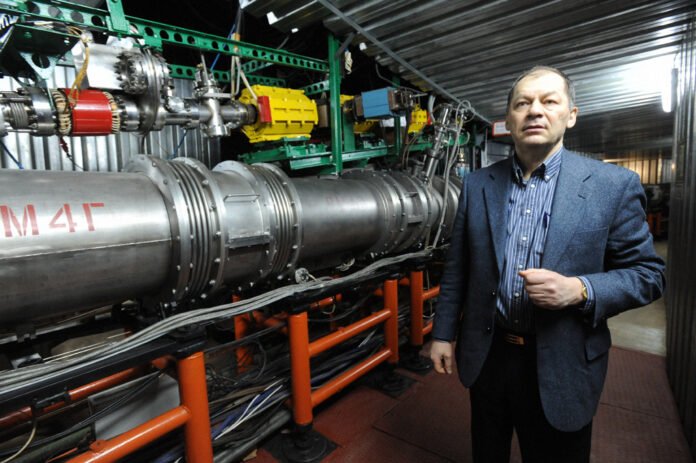Researchers have unified two methods for calculating parton distribution functions (PDFs) into a single, powerful framework. Led by Professor Xiangdong Ji at the University of Maryland, this breakthrough combines Large-Momentum Effective Theory (LaMET) with Short-Distance Expansion (SDE). This unified approach accurately predicts how quarks and gluons, known as partons, distribute momentum within hadrons like protons, neutrons, and pions. This method enables first-principles determinations of PDFs using lattice quantum chromodynamics (QCD), providing new insights into the strong force that binds visible matter in the universe.
Background: The Challenge of Parton Distribution Functions
Parton distribution functions (PDFs) describe the likelihood of finding quarks or gluons with a specific momentum fraction in a hadron. Traditionally, physicists have used experimental data from particle colliders like CERN’s Large Hadron Collider to derive PDFs. Although effective, this method doesn’t uncover the fundamental parton dynamics. Quantum chromodynamics (QCD), the theory of strong interactions, is complex and non-linear at low energies, complicating hadron structure analysis. Lattice QCD addresses these challenges by using a four-dimensional grid to simulate quark and gluon interactions numerically. However, PDFs are defined using light-cone coordinates, which combine time with one spatial direction, while lattice QCD uses Euclidean time.
Two Complementary Approaches: LaMET and SDE
Over the past decade, two major strategies have emerged to compute PDFs from first principles:
Large-Momentum Effective Theory (LaMET)
LaMET enables the direct calculation of quasi-PDFs on the lattice at high but finite hadron momenta. Observables are computed in Euclidean spacetime and matched to true light-cone PDFs through perturbative QCD. As the momentum increases, quasi-PDFs approach the actual distributions. LaMET is effective in showing the local dependence of PDFs across a wide middle range (about 0.1 to 0.7), but it becomes computationally challenging at the extremes as x approaches 0 and 1.
Short-Distance Expansion (SDE)
SDE, an older technique, expands parton correlation functions at small Euclidean separations, linking them to PDF moments through an operator product expansion. It offers global constraints on PDFs, detailing their behavior as x approaches 0 and 1. However, it cannot capture detailed structure in the mid-x region.
Bridging the Two: A Unified Framework
In a paper published on May 28 in Research, Prof. Ji compares LaMET and SDE, demonstrating that their differences at finite momentum are complementary, not contradictory. He suggests a hybrid approach:
- Mid-xxx Region via LaMET
- Calculate quasi-PDFs at hadron momenta reaching approximately 3–4 GeV on the lattice. Use perturbative matching to adjust for finite-momentum effects, resulting in precise PDFs for the range 0.1 < x < 0.7.
- End-Point Constraints via SDE
- Determine the lowest Mellin moments of the PDF using short-distance expansions, which influence the small and large limits. Use these moments as boundary conditions in a global fit that includes mid-range data derived from LaMET.
- Phenomenological Modeling
- In areas where first-principles methods falter—especially in the tiny xxx region with gluon saturation or the extreme x→1 quark–valence limit—use models guided by theory and SDE moments. This combined strategy harnesses each method’s strengths, creating a PDF that is detailed in the central xxx area and tightly controlled at the boundaries.
Case Study: Pion Valence PDFs
Prof. Ji’s team demonstrated a method to calculate the valence quark distribution of the charged pion, a key test for non-perturbative QCD. They used lattice simulations to generate gauge configurations with two quark flavors and computed quasi-PDF correlators for a pion boosted to 2.5 GeV. Through LaMET matching, they extracted the mid-range PDF shape, applying one-loop corrections. Using short-distance operator expansions, they determined the first three Mellin moments for n=1, 2, 3. A neural-network-based global fit was performed, incorporating both the LaMET shape and SDE-derived moments.
The study revealed that the combined method creates pion valence distributions with uncertainties that rival and sometimes surpass those of traditional methods.
Implications for Proton Structure and Collider Physics
With the unified framework validated in the pion sector, attention now turns to the proton and neutron:
- Gluon and Sea Quark Distributions
Expanding lattice calculations to cover both polarized and unpolarized gluon quasi-PDFs, along with sea quark asymmetries, is crucial. SDE can also limit moments of these distributions. - High-Precision Collider Predictions
Enhanced lattice PDFs directly enhance next-gen global analyses, cutting theoretical uncertainties in LHC predictions. This includes processes like Higgs boson production through gluon fusion and W/Z boson rapidity distributions, which are sensitive to small- and large-xxx behavior. - Beyond the Standard Model Searches
Accurate PDFs are essential for distinguishing potential new physics signals from QCD backgrounds. Lattice-based PDFs can impose stricter limits on parton-level anomalies, possibly indicating supersymmetry or other unusual phenomena.
Next Steps and Computational Challenges
The unified method shows promise but faces challenges: Computational Load—obtaining reliable LaMET data at momenta above 333–444 GeV is tough. New algorithmic improvements, like momentum-smearing, are being developed. Higher-Order Matching—extending calculations to two-loop order will cut systematic errors in LaMET and align better with SDE results. Expanded Operator Basis—adding more non-local operators in SDE will extract higher Mellin moments, refining small and large xxx constraints.
Global teams like USQCD and the European Twisted Mass Collaboration are joining forces to address challenges and share lattice resources. Prof. Ji’s team at UMD is organizing workshops to train young researchers in a unified framework, aiming to cultivate new experts in lattice-based PDF determinations.
Conclusion
The integration of LaMET and SDE into a unified computational approach is a pivotal advancement in calculating parton distribution functions from fundamental principles. By combining LaMET’s detailed dependence with SDE’s strong endpoint constraints, physicists can now model quark and gluon momentum distributions with unmatched accuracy. As lattice QCD advances, these cutting-edge PDFs will be crucial for precise Standard Model tests and exploring new physics, from the LHC to future Electron-Ion Colliders. The complex nature of the strong force, once hidden by non-perturbative challenges, is finally being unraveled through the synergy of theory, computation, and rigorous methods.
READ MORE: New Magnet Design Poised to Revolutionize MRI, Particle Accelerators, and Magnetic Levitation
